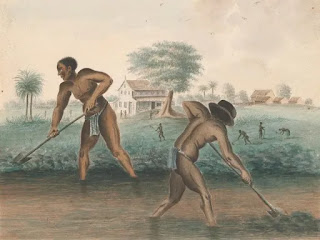Facing the Netherlands' Function in the Ruthless Background of Slavery
Chroniclers examining the Netherlands' background in some cases describe the 17th century as the "Dutch Gold Grow older." The phrase describes an age of unmatched riches in the Dutch Commonwealth, when musicians like Rembrandt truck Rijn as well as Johannes Vermeer repaintinged masterpieces as well as mental lifestyle flourished in urban areas such as Amsterdam as well as Delft.
However this glittery expression obscures a dark reality: A lot of the republic's most affluent locals created their ton of moneys with the enslavement, purchase as well as exploitation of African individuals. The harshness in between the "Gold Grow older" descriptor as well as this dreadful truth is actually such that in 2019, the Amsterdam Gallery revealed strategies towards eliminate the phrase coming from its own galleries—a significant action in across the country initiatives towards discuss as well as contextualize Dutch citizens' function in the transatlantic slave profession.
Currently, a significant exhibit at the Rijksmuseum in Amsterdam is actually analyzing this duration in each its own brutality. "Slavery," which debuted on the internet final month as well as is actually readied to invited in-person site guests when the gallery reopens this summertime, traces the worldwide background of colonialism with the tales of 10 people, consisting of those that experienced enslavement as well as those that benefited from it.
All of informed, records Daniel Boffey for the Guardian, Dutch investors enslaved as well as forcibly transferred some 600,000 African individuals towards the The u.s.a.s as well as in between 660,000 as well as 1.1 thousand individuals about the Indian Sea throughout the supposed "Gold Grow older."
As Valika Smeulders,
move
of the museum's background division, informs Mike Corder of the Connected Push (AP), coordinators intended towards produce a program that highlights exactly just how this tradition has actually defined the lifestyles of all of Dutch residents—not simply the descendants of the enslaved.
"Our team wished to create the situation, that this is actually a background that talks to anyone in the Netherlands," she states. "It comes from everyone, therefore that is why our team selected an individual method."
Talking with Emi Eleode of the Fine craft Paper, Smeulders includes that the gallery likewise modified the wall surface text message for around 70 items along with formerly undisclosed connections towards the slave profession.
For the exhibit, curators unified greater than 140 artefacts that map the background of Dutch participation in the slave profession in between the very early 1600s as well as 1863, when the method was actually outlawed in Suriname as well as the Antilles, every the Guardian. (During the time, the previous was actually a Dutch ranch nest referred to as Surinam; the last describes a team of Caribbean islands, a few of which were actually after that under Dutch command.) These consist of products treasured through enslaved individuals, like blue gleaming glass grains that were actually when utilized as money on the Dutch isle of Sint Eustatius. Regional tale keeps that currently of emancipation, individuals tossed these grains right in to the sea in a look of delight, records the Fine craft Paper.




Comments
Post a Comment